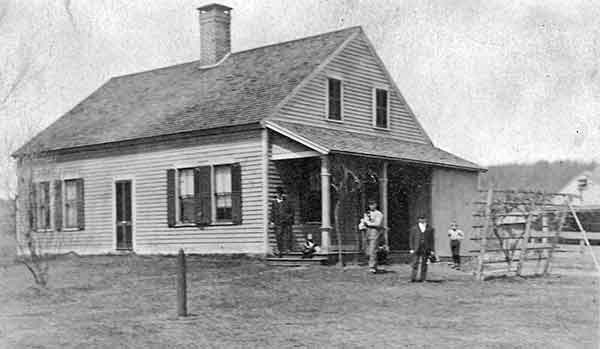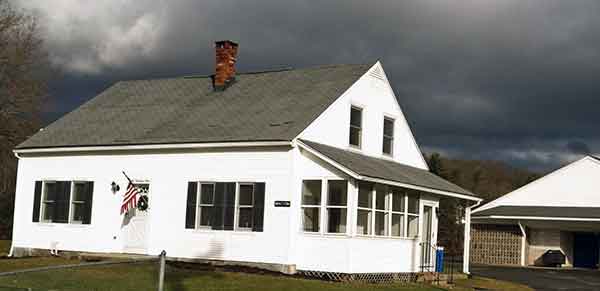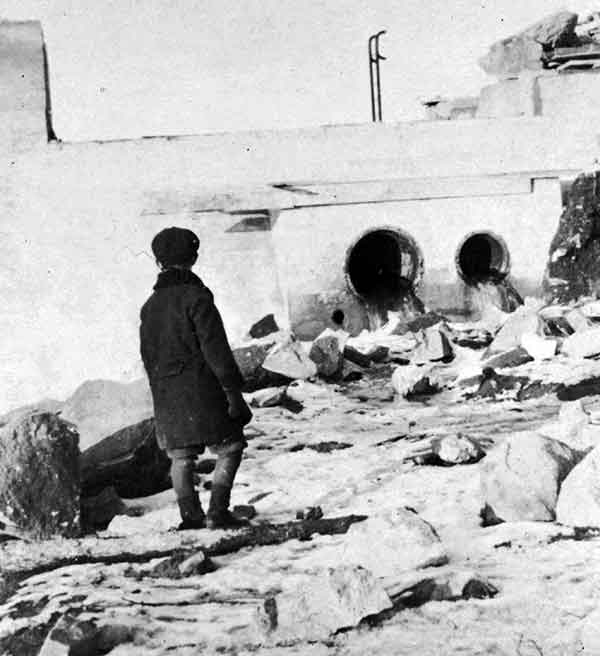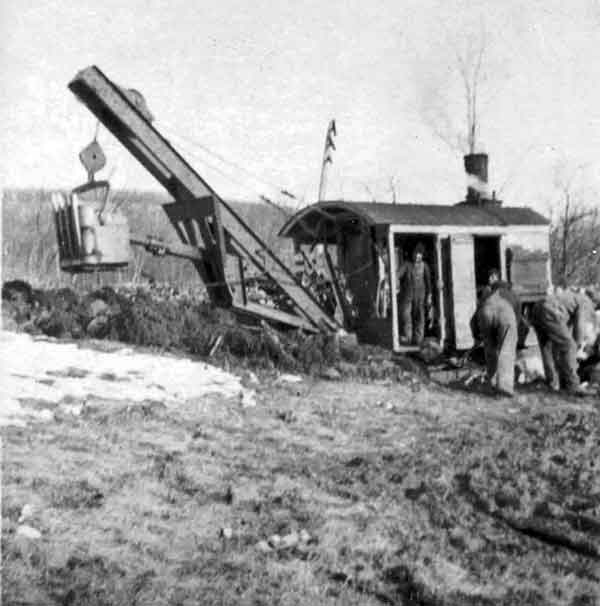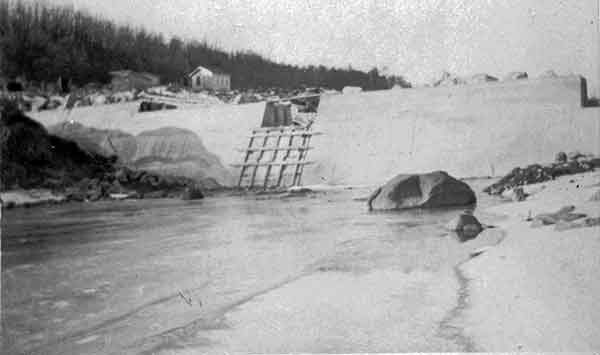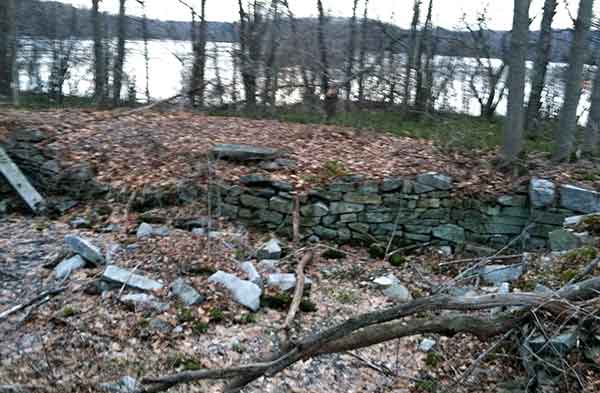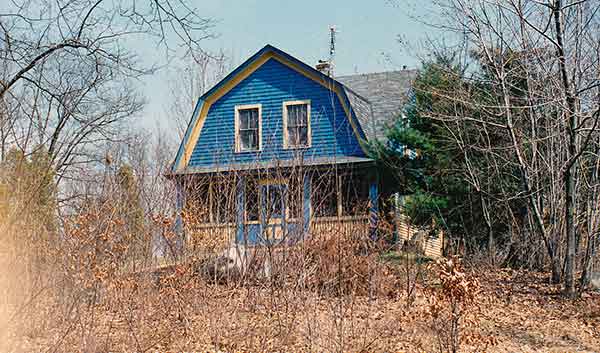|
|
||||||||||||
 |
 |
|
Wolcott Historical Society History for February 2013 By Florence Goodman This past October 2012 the Director of the Woodtick Recreation Area, Jim Scully, retired. As I read the article about his retirement it reminded me of the long history this region has held for our town. This month I would like to revisit two former articles written in the fall of 2009 about this area.
One of Wolcott's oldest reservoirs is the Upson Millpond located at the intersection of Nichols and Wolf Hill Roads. The Mad River, which flowed through this area, was a very powerful water source that early settlers used to produce mill-power. As early as 1776 Judah Frisbie and Elnathan Thrasher operated a sawmill at this location just south of the intersection. In 1790 they sold the mill, land and water rights to the Upson family. This allowed the Upson's to built a stone, concrete and earthen dam, which created a 5½-acre man-made pond known as the Upson Millpond. In 1795 Isaac Upson built a house on the north side of Nichols Road next to the Millpond, which today is known as the Isaac Upson House. This is the house where the Director of the Woodtick Recreation Area resides.
In 1801, records indicated that Harvey Upson, Captain Samuel Upson and Samuel Upson Jr. owned the sawmill, which was on the south side of Nichols Road. In 1809 the house and lot, which included a blacksmith shop were sold to Captain Samuel Upson's daughter, Betsy and her husband, Lyman Higgins.
This began the development of an important manufacturing district associated with this region, which continued into the late 18th century and through the 19th century. About this time the Atkins gristmill, which was originally located below the Great Falls, south of Center Street, on the Mad River was taken down and rebuilt in the Woodtick area. Soon afterward, Charles Kirk operated a clock factory in this vicinity where he manufactured brass clocks. In 1846 the building and equipment were leased to Bennett Upson. The mill structure was enlarged and changed into a paper mill, which was owned by Mr. Emerson M. Hotchkiss from Southington. In 1857, Hezekiah Todd and a group of men from town formed a joint stock company and acquired the millpond land and began to produce high quality paper at this site. This company was in existence for about ten years.
In 1872, Gustave Cornelis and his brother, Clement, emigrated from Belgium to Waterbury. They brought with them the secret of producing seamless tubing. Gustave first worked in Waterbury and learned the art of silver plating. He later moved to Wolcott and purchased the Upson mill at Woodtick. His business began as a rolling mill where they cold-rolled silver plate on copper, which was used to make reflectors for vehicle headlamps. He later expanded the production to drawn tubing.
In 1890, the mill was destroyed by fire; Mr. Cornelis rebuilt it as a one-story brick building and continued the production of copper and brass tubing. Mr. Cornelis constructed a dam at the Nichols Road mill site with four wooden flumes to carry the water across the road. A water wheel supplied the required power to operate the mill. At a later date this power source was used to generate electricity for his factory and home long before other residents had such conveniences.
Gustave Cornelis became the area's most prominent landowner; his estate included the land from the mill site to the corner of Woodtick Road, as well as, the house on the corner of Nichols and Woodtick Roads. The family house was located across from the Woodtick Recreation area on the south side of Nichols Road, but it was demolished many years ago.
Mr. Alfred German who worked for Mr. Cornelis at this mill made the following comments in 1990 to interviewer Skye McBroom. "I was fourteen when I started to work at the mill in February of 1911. The building was a brick structure, rectangular in shape, about 50-60 feet long and 30 feet wide. Inside, it was dirty, greasy, and noisy. At one end was a wood fired muffle furnace used for annealing (heating then cooling) metal tubing. The rest of the factory contained a rolling mill and two draw benches. Power for running the machinery, especially the rolling mill, was produced by an undershot waterwheel (driven by water passing underneath)."
In 1912 the Mad River Water Company, a Waterbury-based corporation, began to purchase land from several area businessmen and farmers who owned land along the Mad River for the future construction of the Woodtick Reservoir, but construction did not begin at that time.
Less than ten years later Mr. Cornelis sold his business on the south side of the millpond to a New Jersey firm. The mill became the home of the Wolcott Fastener Company, which later moved to Waterbury and was known as the Eyelet Specialty Company.
In 1917 construction began on this large man-made pond. It covered approximately 330 acres of land and was associated with the prominent Scovill Manufacturing Company, which needed huge amounts of water to produce brass. The lower dam of the reservoir was referred to as the Cornelis Dam and was made of masonry and earth. This sixty foot long dam consisted of double spillways; one arched and the other straight. Originally both spillways were arched.
Construction of the upper dam caused the Mad River to flood the land and form the Woodtick Reservoir. The water in the reservoir covered sections of two old roads; the present Scovill Road was originally part of Fairclough Road, which ran straight through to the intersection of Munson and Coe Roads. The dirt road where the Kiwanis Club Day Camp is located today was the other section of Fairclough Road. About one thousand feet of Fairclough Road was covered by water with the creation of the dam. Wolf Hill Road, which runs along the west side of the reservoir, was built to replace Fairclough Road. The lower end of Bound Line Road, just below Coe Road to the intersection of Woodtick Road replaced the older section of Bound Line Road that was also flooded by the new dam. Farm properties that belonged to Conrad Herbst, N. Hanson and D.L. Frisbie, as well as, the Timothy Root House that was on Fairclough Road were sold to complete this project.
Mr. Joseph Winkler was nine years old when the dam was under construction; here are some interesting facts that he remembered as he spent hours watching the Italian workers build the dam. The barracks that housed about 300 men were located where the Kiwanis Club Camp is today. All the hauling was done with dumpcarts not trucks and most equipment was operated by steam, except one cement mixer that used gasoline. All the dirt to build the earth dam at the end of Scovill Road was brought in from other places. Woodtick Road (near Bound Line Road) was raised up about five feet to prevent flooding and the lower end of Bound Line Road was moved. A truck called a "Kissle Kar" brought the cement from the railroad station in Waterbury; it was packed in linen bags. They built two 12' X 12. towers of Georgia pine, one at Wolf Hill Road and one at the end of Scovill Road; a series of cables were used to move the cement bucket to wherever they wanted to dump it.
The construction of the Woodtick Dam and Reservoir changed the path of the Mad River and the physical characteristics of the land around it forever. Farms, roads, pasture lands and stonewall boundaries were lost to these floodwaters. We even lost the original site of the Wolcott Fair Grounds, which was located on Munson Road between the river and the road, close to the intersection of Brooks Hill Road.
In 1936, Mr. Leslie Hart who was employed at Scovill Manufacturing became the caretaker of the upper reservoir and boat dock area. He and his wife, Loretta and children lived in the company owned house located at the end of Scovill Road for fifty dollars a month. There was also a large barn on the property with a top level that was perfect for holding parties, which they did quite often. Hart stated in an article from the Waterbury Republican that, "members of Scovill Rod and Gun Club could buy a fishing permit for fifty cents." He received ten percent commission for the permits and boat rentals. When he was at work, his wife had the job. Hart was also responsible for the upkeep of the wooden boats that were rented out. Each fall you could see him scraping and repainting them for spring when a fishing contest was held for Scovill employees. Mr. Hart would weigh the fish as they were brought in; the fisherman who caught the largest fish would receive a nice prize. There were trout, large and small-mouthed bass, bullhead and pickerel in the reservoir for the catching.
Another part of Hart's job was to open and close the floodgates on the dam. He said that during World War II, Scovill was making ammunition and they used the water from the reservoir at the factory. Thus the local police guarded the huge cement dam to make sure it wasn't bombed. They were stationed at the dam twenty-four hours a day. Hart and his family lived in the home and maintained the property at the end of Scovill Road for over fifty years.
In 1970 Jim Scully, a gym teacher in Wolcott, was hired by the Scovill Employee Recreation Association to serve as director of their recreational facility on the lower reservoir, which was owned by Scovill Manufacturing Company. Century Brass later leased the property for recreational purposes and Jim continued as director. This began his long tenure in this position.
In April of 1985, the Scovill Manufacturing Company made an offer to Mayor Edward Wilensky for the town to purchase Woodtick and Chestnut Hill Reservoirs and Cedar and Hitchcock Lakes for a total of $3,269,000. After negotiations with Scovill, the Town held a referendum on June 11, 1986, to approve a $1.4 million bond issue to buy Woodtick Reservoir. It was approved by a 965-85 vote. The final price of the package included $740,000 for the Woodtick Reservoir, $460,000 for dam repairs, required by the State DEP, and $200,000 for engineering and legal fees, and a contingency fund. As part of the purchase, which was signed on July 9, 1986, the Town was given Hitchcock Lake and Chestnut Hill Reservoir, both for "no consideration." After the land was purchased from the Scovill Manufacturing Company the Acquired Facilities Commission continued to have Jim Scully manage the land.
Sometime in 1990 the Scovill Recreation was renamed the Woodtick Recreation Area. A town-wide contest was held and the new name was chosen from many suggestions. Presently this attractive recreation area is enjoyed by town residents as well as residents from surrounding towns. In October when Jim Scully retired as Director of the Woodtick Recreation, Dave Pelletier was appointed; he now resides in the Issac Upson Home.
(Information for this article was taken from Samuel Orcutt's, The History of the Town of Wolcott, Connecticut From 1731 to 1874, The Woodtick Dam and Reservoir by Skye MacBroom, The 1986 Historic Resources Inventory by J.P.Loether, and Wolcott, Connecticut 175th Anniversary 1796 - 1971 by John Washburne and a 2013 phone conversation with Mary Hart, daughter-in-law to Leslie Hart.)
Our Schoolhouse Museum, which is usually open in the fall on Sunday afternoons, will be closed for several months this winter because of painting. We hope to see you in the spring when it reopens.
Isaac Upson House at Woodtick Reservoir Circa 1907 - George German, his son, Alfred and daughter Gertrude lived in house. The identity of man and child on the porch are unknown.
Isaac Upson House at Woodtick Reservoir 2013 where the Director of the Woodtick Recreation area lives.
Construction of upper dam in 1917. This may be Mr. Winkler..
Steam shovel used on dam construction.
Construction of the dam in 1917. The shed on the left is where Wolf Hill Road is today.
The remains of a house foundation on upper reservoir area near Woodtick/Bound Line Roads.
The caretaker's house at the end of Scovill Road at the upper dam where the Hart family lived. This road was originally Fairclough Road that met up with Coe and Munson Roads.
To view past installments of the Wolcott Historical Society News, click here.
|
|
|
[Home]
[News]
[Purpose]
[Calendar]
[Museum]
[Membership]
[History]
[Contacts]
[Links]
All material at Wolcott Historical Society Web sites Copyright © 2000-2013 Wolcott Historical Society |
